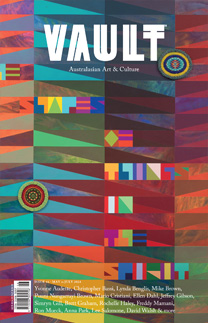Paul Pfeiffer
Rules of the Game
Athletes are transformed into deities in the work of Paul Pfeiffer, the New York artist whose sculptures, videos and installations reframe sport as cultural spectacle — with thrilling results. “The arena is a kind of counterpoint to the suburban home,” he tells VAULT.
Paul Pfeiffer is best known for his video re-edits of boxers and basketball players, but his work owes as much to architecture as it does to sport. He is interested
in scale and viewing platforms; in how spectacle is presented, whether in a stadium, in a gallery, or at home, and in what lies behind the surface of an event.
Pfeiffer, who has a boundless energy for inquiry, works
in his light-filled apartment in a former school in Spanish Harlem. He’s away often, though, developing projects across the globe that often involve a lot of organisation, people, and risk.
He returns frequently to the Philippines, where, as a child, he made dioramas of typical small-town American scenes. Inspired by a book of miniatures of American life that
a neighbour, the daughter of an American missionary, showed him, they were popular with friends and family. “From the start, there was this idea of playing with images as a way to engage other people,” he says.
One of the first dioramas he made as an adult was of the set of the bedroom scene from the film The Exorcist (1973). Made in 1998, the work is titled Quod Nomen Mihi Est? (‘What Is My Name?’ in Latin), a question the exorcist, Father Karras, asks the possessed teenager, Regan, who answers in an unintelligible, alien voice. Central to the film's original mythology is that this voice was so frightening that audience members ran out of theatres, vomiting. Karras tapes her voice on a reel-to-reel recorder and then.. Subscribe to read this article in full
























